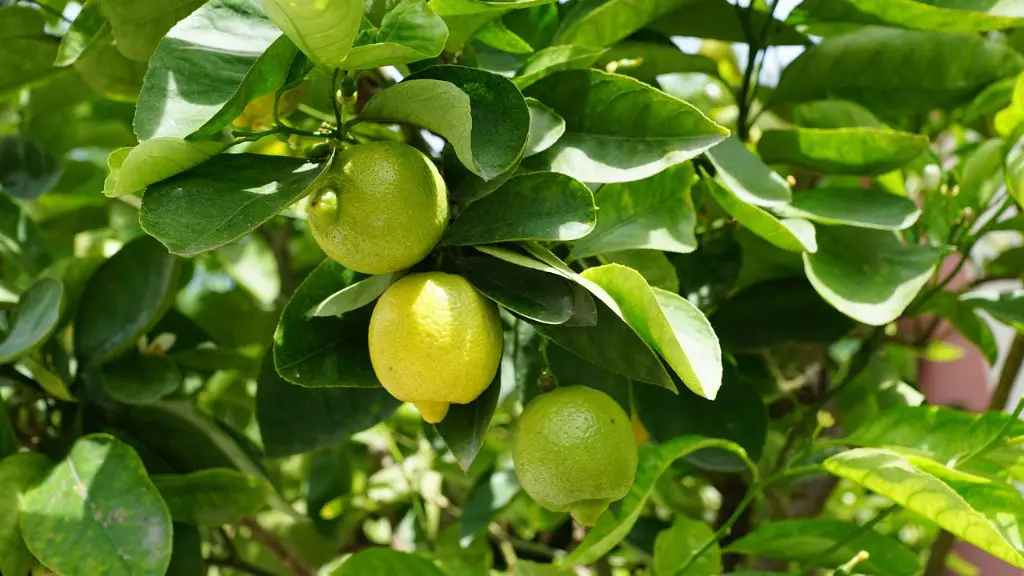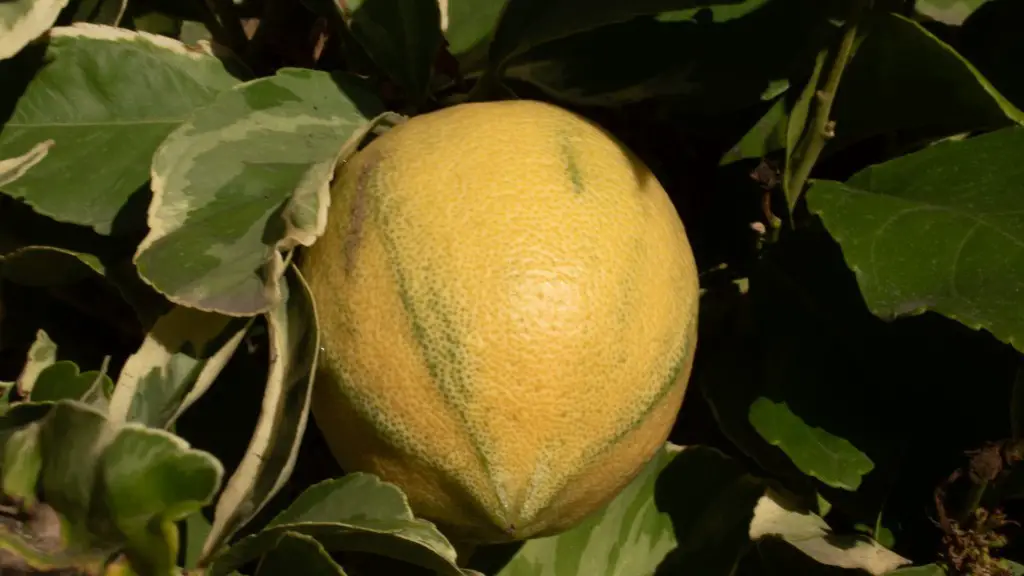Limes and lemons can be difficult to tell apart if you don’t know what to look for. While they are very similar in appearance, they possess different characteristics that help to tell them apart. Knowing how to tell the difference between limes and lemons can help you choose the right fruit for your needs. Here’s how to do it.
Firstly, the size and color of the fruits can be used to differentiate between limes and lemons. Limes are generally smaller in size and the rind is a yellow-green hue. Lemons, by contrast, tend to be larger, and a distinct yellow color. Additionally, lemons will often have bumpy, dimpled skin whereas limes have a smooth surface.
Furthermore, feel can be a reliable way to tell a lime from a lemon. Limes are generally quite firm and spongy when ripe, whereas lemons will feel softer and more pliable. Both fruits should be free from bruises and soft spots, and they should feel heavy for their size.
In addition, the limes tend to be more acidic and tart compared to lemons. When tasting, limes will usually have a stronger flavor, which some consider more pleasant than that of lemons. Lemons are also characterized by a stronger scent, which will be immediately noticeable. Even when closed, limes won’t have the same distinctive smell as lemons.
Finally, the leaves on the respective trees can also be used as an indicator of the type of fruit. Lemon trees have glossy, shiny leaves that are long and pointed. While lime trees also possess these, their leaves tend to be a bit duller and shorter.
Environmental Factors Affecting Difference in Lime and Lemon Trees
Various environmental factors can also affect the differences between the two types of fruits. Different locations will have varied soil types, temperatures, and sun exposure that can affect the color, size, and flavor of the fruits. Additionally, this can also alter the shape and texture of the leaves, making it difficult to tell which tree is which based solely on the leaves.
Pollination and other options of fertilization can also make differences between limes and lemons. Generally, limes cannot self-pollinate, so they must be cross-pollinated with another tree. Leads, on the other hand, can self-pollinate and do not need the assistance of another tree. As a result the limes can often look and taste different based on the type of pollen used.
Lastly, the variety of limes and lemons can further complicate telling the difference between them. There are many different varieties for each fruit, as well as hybrids between them. Each variety can have slightly different characteristics and flavors, so it is important to take all of these into consideration when attempting to differentiate between limes and lemons.
Care of Lime and Lemon Trees
Knowing the difference between limes and lemons can also be important for their care. Appropriate fertilization and watering schedules can vary depending on what kind of tree you have. Additionally, both types of trees are prone to certain pests and require different treatments to keep them healthy. Proper soil drainage and potential pruning may also occur, which makes being able to tell the difference all the more important.
Both limes and lemons also require different amounts of sunlight and heat to properly thrive. Limes need more shade to avoid sunburn and can get sunburn easily. However, lemons require more sunlight and can suffer if not exposed to enough. A larger variety of limes tend to be more cold hardy than lemons, and may even tolerate light freezes, while some lemons can be damaged at temperatures near freezing.
In addition, both trees can benefit from regular fertilizing and pruning. Organic fertilizers are preferred to synthetic fertilizers, but many kinds can be used. The amount of fertilizing should be dependent on the age and size of the tree. Pruning is especially important for young trees to keep them growing strong. Both young and mature trees should be pruned regularly to encourage strong and healthy growth.
Finally, limes and lemons can require different amounts of water. Lemons use more water than limes, and require regular watering to ensure that the fruit is growing properly. Both should be watered deeply and consistently, but lemons in particular may need additional water during seasons of drought or higher temperatures.
Harvesting of Lime and Lemon Trees
Another important factor for knowing the difference between limes and lemons is harvesting. Generally, the color, size, and feel of the fruit can all be used to tell when it is time to harvest. Lemons will have glossy yellow skin and can have a thin, dry layer of white on the exterior. Limes, on the other hand, will be able to be picked easily when ripe and will have a greenish-yellow color.
Additionally, harvesting can vary greatly depending on the variety of tree and the fruit. Some, like Meyer lemons, can be harvested all season, while others may be limited to only one harvest. Limes usually have very short seasons, meaning that the harvest has to be done quickly. Additionally, citrus trees can be more difficult to harvest as they can be more fragile than other types of fruit trees.
Furthermore, harvesting limes and lemons are also dependent on the purpose of the fruit. If you are looking for juice, then you need to leave the fruit on the tree until it is ripe. On the other hand, zesting and candying require the fruit to be picked early. For zesting in particular, you need the fruit to be picked before it is ripe, otherwise the zest will be too bitter.
Finally, the best way to tell when it is time to harvest is to check the fruit. If it is firm and heavy for its size, then it is likely ripe and ready to harvest. Additionally, the fruit should have a sweet-smelling aroma and be full of flavor. If upon tasting the fruit it is sour or tart, then it is not yet ripe and should be left on the tree a bit longer.
Preparing Lime and Lemon Trees for Harvesting
When preparing trees for harvesting, it is important to ensure that they are healthy and in one piece. Over harvesting or uprooting can damage the roots and puts stress on the tree. Additionally, when harvesting fruit, it is important to remember to support the branch that the fruit is coming off of to prevent damage to the tree.
Furthermore, lime and lemon trees can benefit from regular pruning. This can help with the growth of the tree and help to manage the shape and size of the fruit. It can also encourage healthy growth and make harvesting easier, as the fruit will not be spread out all over the tree. Additionally, pruning can help with disease and pest control, as dead and weak branches can easily become a breeding ground for pests.
In addition, proper irrigation is important for preparing a lime or lemon tree for harvesting. This should start several weeks before the expected time of harvest. Too little or too much water can stunt the growth of fruits, keep them from ripening or cause them to split. The frequency and amount of the irrigation should be adjusted depending on the weather, the age and size of the tree, and the condition of the soil.
Finally, fertilization can help to ensure that your fruit tree is ready for harvesting. Organic fertilizers are preferred, but synthetic fertilizers can also be used. Fertilizing lime and lemon trees should focus on promoting strong growth and healthy fruits, as well as encouraging larger yields. The frequency and amount of fertilizer should also be adjusted depending on the age and size of the tree.





